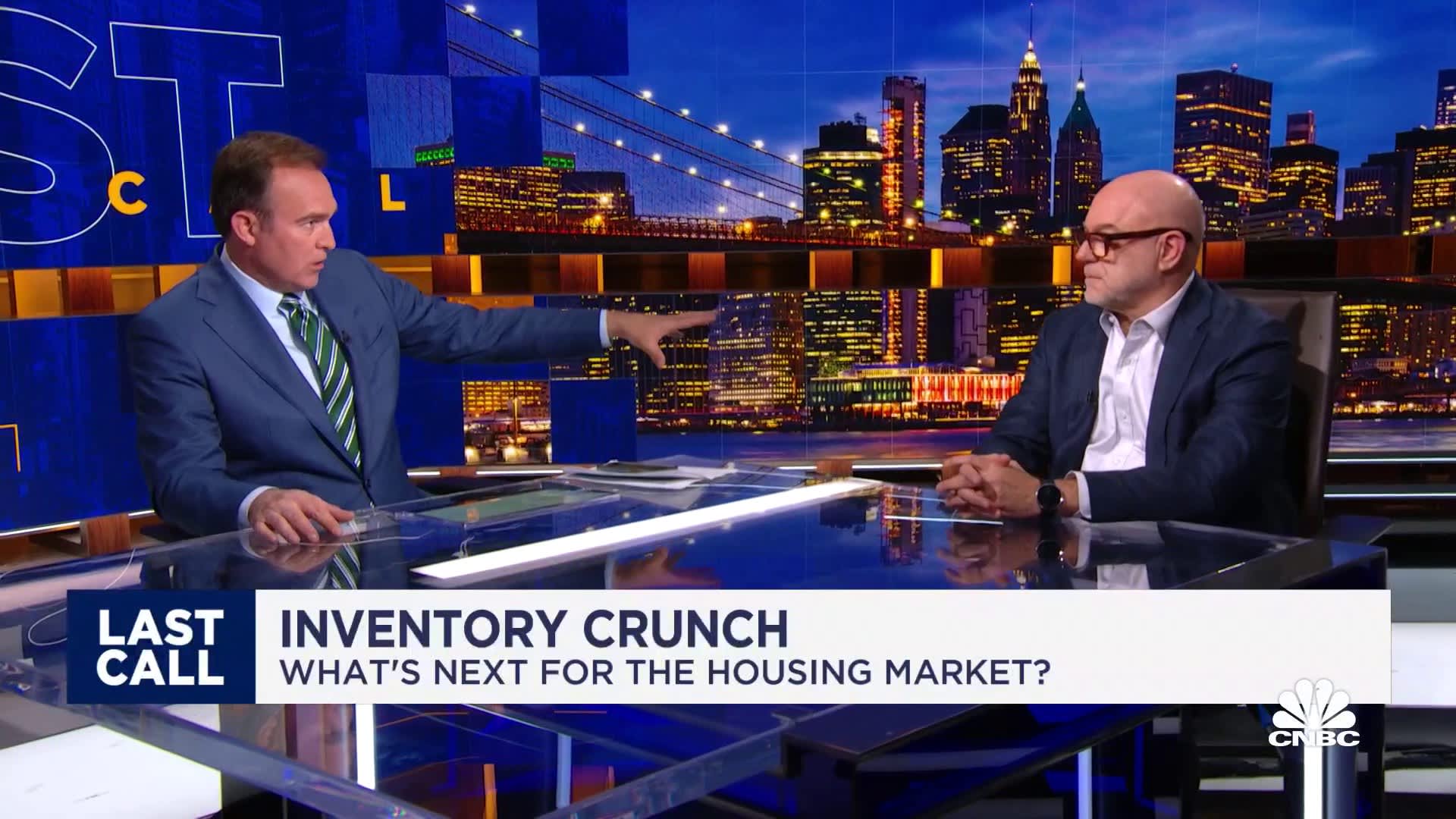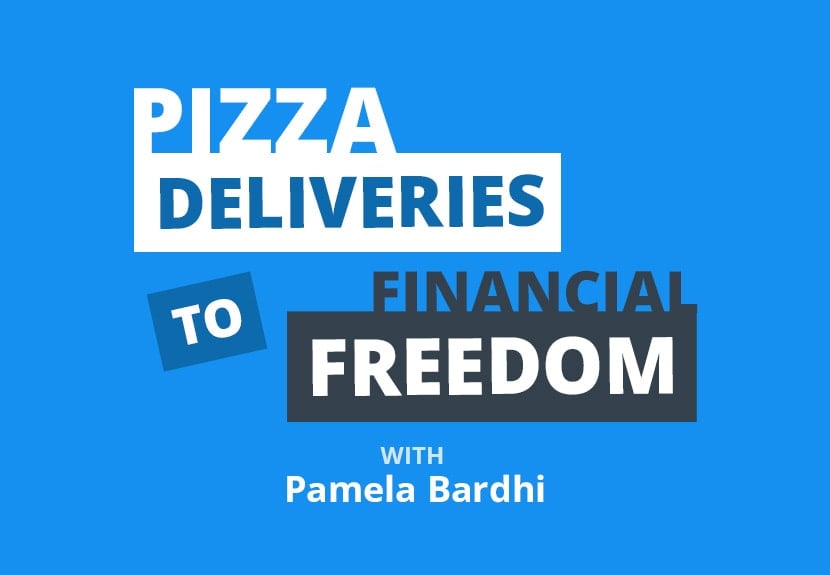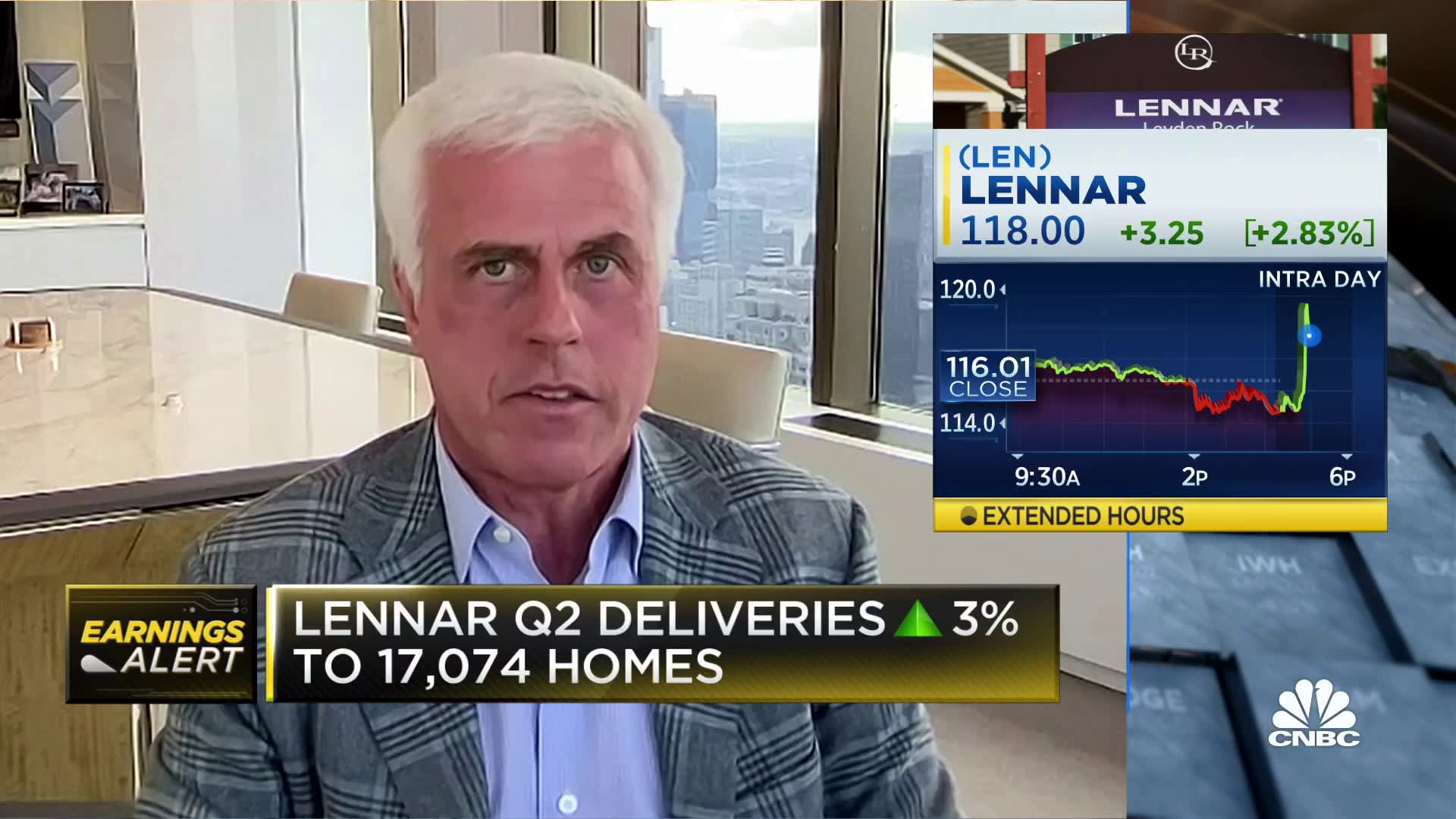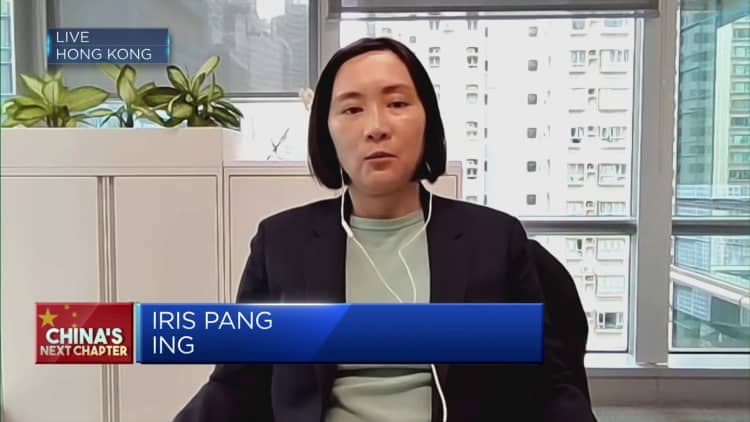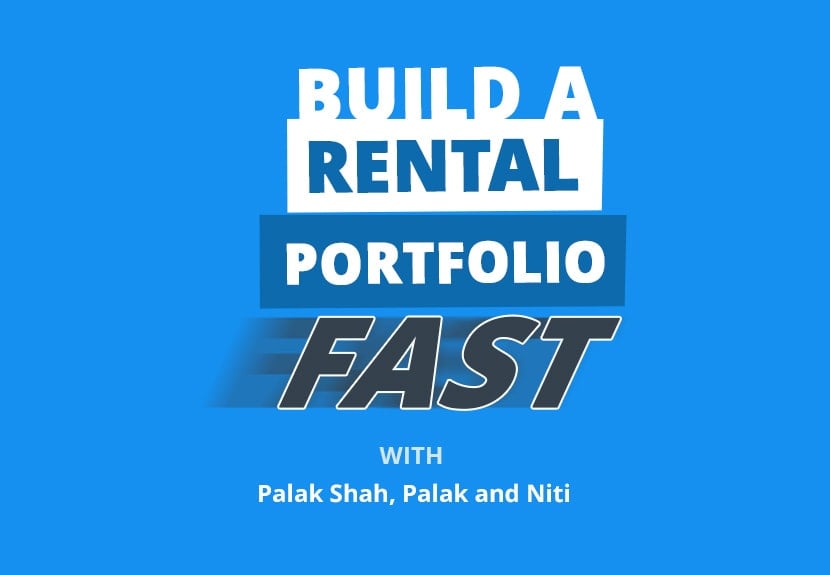Home Price Predictions, Affordability False Flags
Housing market forecasts, affordability false flags, forty-year mortgages, and a baby boomer shopping spree. Today, we’re touching on anything and everything affecting the housing market as the full On the Market panel joins Dave Meyer to answer YOUR most-asked questions. Dave has been collecting questions from viewers to have a rapid-fire question-answering round with some of today’s top real estate investing experts. If you want to know what will happen next in the housing market, tune in!
We invited the whole crew to give their opinions on today’s investing market. We’ll talk about whether the real estate market’s “crash” is tied to stock performance, affordability and how ADUs (accessory dwelling units) may have shot home prices even higher, and the new forty-year mortgage and whether or not it’s a safe option for everyday home buyers. But, we’re also peaking into our crystal balls to give some BIG housing market predictions for the next few decades.
Kathy talks about how average home prices could hit seven figures (seriously!) within our lifetime and why buying now may be your last chance to snag an “affordable” home. Then, to wrap things up, our expert guests share which asset class they’d invest in TODAY that could lead to a HUGE payoff in just a few years. The market is changing; stick around so you’re not left behind!
Dave:
Hey, what’s going on everyone? This is Dave, your host of On The Market, and today we have a super fun show for you with Kathy, Jamil, James, and Henry. We are taking listener questions. We’ve got some incredible questions from all of you to answer today. I actually went out and assigned each question to one of the panelists, so they did some research and then we’re going to debate each of the topics. We have some phenomenal questions submitted by all of you, so thank you for submitting them. We’re going to be talking about all sorts of different topics, everything from how and when the housing market might be bottoming, whether ADU laws that are supporting the building of ADUs are actually improving affordability.
We’ll be talking about how to guide your investing 10, 20, or even 30 years down the line. We’ll talk about demographics, why lenders don’t undercut each other, and at the end, we’re even going to predict what asset class is going to perform the best over the next three years based off market fundamental. So this is going to be a phenomenal show. I hope you all stick around, but we do have to take a quick break and then we’ll get into your listener questions.
Welcome back to On The Market. Today we have seven listener questions from you all. I asked people on Instagram what they wanted us to discuss today, and I got tons of great questions. We picked seven that we thought were interesting and applicable to our national audience, so keep an eye out for that either on my Instagram or on the BiggerPockets Instagram. If you have questions for the panel, we’re going to be doing more shows like this and we’d love to hear what questions you have. So the way we’re going to do it is we each one of us picked topics that are within our wheelhouse, and so I’m going to ask the questions and then each one of us is going to answer it and we’ll have a few minutes to discuss or debate for each of the topics.
The first question is how should we think about the bottom of the real estate market? Ben, back in the great financial crisis, the housing market bottomed in 2012 compared to stocks that bottomed three years earlier in 2009, and that is accurate. February of 2009 is when the stock market bottomed. February of 2012 is when the Case-Shiller index bottomed just three years later.
Personally, I don’t really think this is an indicator that I would watch because it really matters when you think about these two different asset classes, what was going on in the context of that big correction and yes, crash. And I think the difference in what happened in 2008 that’s different from almost every other recession that I’ve looked at is that housing actually led the country into the recession in 2008. It was a housing based crisis where bad loans and speculation cratered the rest of the economy and so because housing was the source of the problem, it was also took the longest to be fixed.
If you look back at other recessions like the sort of the dotcom boom where the stock market went down from about 2000 to 2003, during that stock market decline, the Case-Shiller index never declined at all. So that just shows that housing prices weren’t really affected by stock prices in that instance. If you look back to a previous recession in the early ’90s, you can see that although housing prices did go down in the early ’90s, they went down about 1%, whereas the stock market went down about 15%.
So I don’t think these things are really all that correlated, at least historically, the Great Recession was just different because housing was the source of the problem. That is not what we see as the source of the problem right now. Housing is being affected, but I don’t think it’s the cause, and so I wouldn’t really think too much about trying to identify that housing bottom based on stock market performance. But curious if any of you think differently.
Kathy:
Yeah, I think they’re two very separate things. One of the big differences and changes that we’re seeing recently is the Fed seems to be more supportive of the stock market than ever before. And we talked about that on the Chris Martenson episode that we did here. Check that out if you haven’t seen it yet. But there were some changes made after the last recession that seems that the Fed is very accommodating to make sure that the stock market stays afloat.
Henry:
I agree with you, Kathy. There’re two separate markets. I think it’s smart to realize that there’s a shift happening within the stock market and then use that as a trigger to help you and go and research what’s causing the issue and then see if those triggers are affecting the same triggers that you would look for in the real estate market. But just because the stock market is going down, it doesn’t mean that real estate is going to follow suit, but I think again, I think it’s great to understand what’s happening in the stock world and then do some research to make sure that those what’s causing the stock market to go down won’t also have an implication on the real estate market.
Dave:
Yeah, generally speaking, I think if you’re looking for a bottom, we may have already hit it, it’s uncertain, but as soon as the Fed starts lowering interest rates pretty confident that will be a for sure bottom, but we’ll see. All right, next question. This one is for you James. This is something that has impacted your home state of Washington. The question is, can you tell us about the proliferation of pro-ADU, which stands for accessory dwelling units, that’s basically like when you build an extra unit in your backyard, something like that at a DADU mother-in-law suite, whatever you want to call it. So the question is, can you tell us about the proliferation of pro-ADU laws and what, if any effect they have had on affordability?
James:
Yeah, the ADU laws, it’s been a huge transformation of our city. So basically in 2019, the city really started or they realized that we’re going to have a mass shortage of housing and people can’t afford what’s being built there right now. Seattle, Washington needs 55,000 houses added to the rental market every year or properties for it to keep up with supply. And so that’s a big, big demand. And so what they’ve done is they’ve actually just recently, so in 2019, they started passing these rules where you could build a accessory dwelling unit on the back of your property. That started working, so they started doubling down on it and it allowed you to actually get more density throughout Seattle.
What this really comes down to is just density, what you can build on your lot, but they put in restraints on the size of properties you can also build because now you can no longer build a little mini mansion in Seattle. You have to cover a 50% far coverage, which is the amount you can build. So they’re really motivating people to build smaller units because it will provide more housing. The effect on affordability I don’t think has had any impact whatsoever, and there’s two main reasons for right now.
The reason being is the buyer demand was higher than everyone thought, and they thought that these units would be a lot cheaper, and they’re not. They’re selling for more than town homes. They’re in higher demand than a shared wall unit, and so they’re selling for 10 to 15% more than the product that they were trying to be even cheaper than. And so if we’re in a core neighborhood in Seattle, we can build them for 350 grand to 400 grand. We’re going to sell them for about 775 to 850, those are our metrics right there so that works. But the problem is you’re still spending $850,000 on a two bedroom, two bath, 800 square foot house.
Dave:
It’s wild.
James:
And so it’s not that affordable. It’s the highest price per square foot. And then the other issue is you can’t build them cheap enough to work in the affordable neighborhoods. If I build that same product for 400 grand, that thing’s only going to be worth 350 and the rents aren’t going to cover nearly what the debt cost is going to be. And so we’re kind of in this middle of the road issue right now where it’s creating more property for people to buy, but it’s definitely not affordable.
Dave:
That’s super interesting. Yeah, it’s kind of impossible to prove the counterfactual. You have no idea if prices around the city would go up if this didn’t happen because the more supply, but I think it’s really a good point that in the affordable neighborhoods it still just doesn’t pencil out. So even in the areas where it is needed probably the most, it doesn’t make sense. I heard some, I forget who, we had a guest recently who was talking about this and was talking about how one of the main things that would really help is if Fannie and Freddie would allow you to count future rental income when taking out a loan because then just normal home buyers would be able to finance building these ADUs and it might be able to help get some more of these things actually built.
James:
Well, the funny thing is these rules will always be manipulated a little bit. Manipulation might be the wrong word, but it maximized I guess because they did this, so people could build a rental unit in their backyard per viable housing, but then in Seattle, they allow you to condo those off. So all you’re doing is doing a mini subdivision and selling it off for a higher price. And so it didn’t add rental units, it added more units to sell, and so each city is starting to adapt that too, so the rental units might not be there anyways.
Dave:
All right, great. For our next question, Kathy, is there any data to guide long-term real estate investing 10, 20 or 30 years down the road?
Kathy:
Well, my answer is I’ll just let the numbers give the answer. I went back and looked at the Fred basically home sales numbers or home price numbers over the lifetime of my life. So five decades, actually almost six. So going back to 1964, the median home price was $18,000, you guys when I was born, and then by the time I was 10, it had doubled. In just that 10 year period home prices were $35,000. Then by the time I was 20, they almost doubled again, $78,000. Then in ’94 they went up to $130,000. In 2004, $212,000 that’s when I kind of basically started investing. I remember saying that on one of the shows, that’s the home price.
So moving forward to today, the average home price according to Fred, again, $436,000, this is taking in all kinds of units, including new homes. So if I take those, I just decided to go with something more conservative, which would be a 40% increase, not doubling, but if prices just went up 40%, which would be the lowest over the last six decades, by 2034, the median home price would be $610,000 by 2044, $854,000, and by 2054, almost $1.2 million for the average home. And that’s again, using very, very conservative numbers.
It’s hard to imagine that, but it was hard for people to imagine in ’64 that a values could double from $18,000 to $35,000. So the bottom line is that the dollar is being devalued every single year. So it’s not really so much that home prices are going up or that property’s becoming more valuable. Just your purchasing power is weakening every single year. And we know that that’s not changing at all with this issue of the debt ceiling that we’re facing right now where, well, nobody wants to cut costs on anything.
Republicans want to make sure that we’ve got a strong military budget, and of course the Democrats want to make sure that there’s social programs and nobody wants to cut anything. So the debt ceiling keeps increasing, but you can’t keep increasing taxes or else people would have nothing to live on. So the way that the government deals with all of this spending is printing more money. So it’s not going to be anytime soon that we stop seeing the dollar devalue, it’s going to continue, and therefore these prices are going to look like they’re going up.
So that’s the best. Nobody can predict the future, but when you take six decades and just average it really low of what could happen, that’s what could happen. That’s why I think if you’re not getting into the housing game now, it is not going to get easier. It’s just going to keep continuing, especially now that, like I said, there’s kind of a baby boom happening in certain areas in Texas for sure, just look that up, baby boom in Texas. I already said Salt Lake. We are seeing population growth. Some people say it’s on the decline, but we’re still growing and certain areas are growing faster than others. So if you really want to take advantage, you want to be in those areas where there’s job and population growth that would continue over the next few decades.
Dave:
Definitely a baby boom in my group of friends. So anecdotally, I can definitely support it. Everyone I know has had a baby in the last three months, but it’s great. But Kathy, to your point, I think it’s a great point that the housing market fluctuates and we are in a unusually volatile time, but if you just look at the median home price of the United States, go look it up. Go to the FRED website and look at the median home price of the United States back 50 years, and that will tell you what you should do with real estate investing, it’s really not that complicated.
Kathy:
And there’s been recessions, massive recessions during all of those decades. Each decade there was some kind of recession and it was pretty terrible at the time. And yet you’re still seeing those home prices nearly double almost every decade. It’s incredible. So it is hard to believe that by 2054, my grandson’s going to have to pay a million dollars for an entry level home, but that’s just what we’re going to be dealing with.
Dave:
All right. Well, thank you Kathy. Henry, the next question is for you, the question is what is the federal solution to a broad pathway to affordability, ie, a 40-year mortgage restrictive invest? What is that?
Henry:
Those are just examples.
Dave:
Do you think that means restricting investment with them?
Henry:
No, I think it’s more about what the government has done with the FHA kind of restructure. So I think the general question is what can or is the government doing about affordability within the real estate market for the average home buyer? Yeah, I mean, obviously one of those is the FHA mortgage restructure program, which is a start, but there’s some restrictions. It’s not available to everybody. You have to already have an FHA insured mortgage and you have to be current on your payments to qualify. And then if you are, you’re able to restructure into a 40-year mortgage, which can help with affordability because now you’re stretching your payment out over 10 more years, which helps your monthly payment go down. But the trade-off to that is you’re going to pay a lot more in interest now because you’re stretching that interest out over another 10 years.
And again, it’s not available to everybody or all the borrowers. So you already have to be a homeowner essentially to qualify for this. And so if you think about options for what the government can do to help affordability, we’ve talked about this on a previous show, I don’t think affordability can be solved by one party. I don’t think just the government can solve affordability. I think the government partnered with builders and investors and the people who need to afford those homes, I think all four groups have to come together.
And when all four groups come together and work in each other’s best interests, then I think that’s when we can start solving the housing affordability. And what I mean by that is everybody’s only looking through their own lens. And so if the government wants to enforce restrictions on what builders can build, then there will be less builders because builders are building for a profit and city and local governments, that’s who also has to be included. And so a well-rounded solution would be the government provides tax breaks to builders and or investors. The city and local government helps provide either tax breaks for the buyers or tax breaks for the builders.
Maybe they offer discounted land and some city and local governments are doing this, offering discounted land where builders can then build in those areas and get tax breaks and the tax breaks help offset what they would lose in profits because if they’re going to have to build something that they can’t sell at the tippy top price in order to maximize their profits, and there has to be some other reason for them to be able to do that.
And so if there’s a tax incentive and the city and local governments are helping to supply land, and then we help educate the general public on what they could be doing from a financial perspective to improve their financial situation, you put all those things together and you can really help and start to fix affordability. Now, the likelihood of that happening anytime soon, probably not too high. So in the short term, some of the things that can be done are providing incentives to tax breaks to renters. If they don’t have to pay as much in taxes, there’s more money in their pocket to be able to afford rent.
And then just expanding so when you think about affordability, there’s, can I afford the monthly payment? And then there’s, can I afford the down payment? And for the typical buyer, those are two separate things because if I can afford the monthly payment, but I can’t come up with 50 grand for a down payment, it doesn’t matter what the monthly payment is, I can’t get to that 50 grand. So having some sort of expanding access to down payment assistant programs, so there can be maybe some government down payment assistant programs that we can push out nationwide to help with the down payment, and then offering a 40-year mortgage to everyone. Expanding the years of the length of a mortgage isn’t new.
The 30-year mortgage was introduced in what, 1934? And before that, the length of mortgages were like five years. So because what Kathy talked about was happening every 10 years, real estate was doubling, it was becoming more harder and harder for people to be able to afford homes, and so they had to expand the mortgage length to something where people could afford it. And so it wouldn’t be unprecedented for there to be a 40-year mortgage program for the general public in the coming future. I think it’s going to be here. I think it’s necessary because I don’t know how else you’re going to be able to combat the rising home prices. And again, if those interest rates start to come down and that buyer demand is going to go up, that’s just going to drive prices even higher faster so-
Dave:
Yeah, I mean, I agree with you that it should be an option to people, but I also think you brought up a really important point that a 40-year mortgage just means people pay more interest over time. So although it is, I think people should have that option, if they want to choose that, that’s fine. But it isn’t like the best long-term solution in my mind, it could help in the short term just because that’s just putting more money in lenders pockets over time and helping and not necessarily fixing what I personally believe is the big issue, which is a lack of supply.
And you talked about some of the big issues that we need to handle. I’m curious because the question was is about federal, and you mentioned a lot about state and local governments, and I tend to agree that that’s probably where the solution will go. I don’t know if anyone has any other thoughts if the federal government can do anything else.
Jamil:
If you look at what happened in LA, they tried this. The state tried to come in and build units to see if they could affect the homeless situation there and these small little units that they were building were $800,000 a piece. Just think about the amount of waste that had to have happened for that, and we’re talking 400 square feet. 400 square feet for $800,000, what is going on? So there’s just, people are not incentivized at a state government level to be able to be efficient. You’ve got to put the efficiency in the hands of the business people who understand how to do that correctly and efficiently to make it make sense.
James:
Government should not be building housing. It’s got to be together.
Dave:
Yeah, yeah, exactly, but James, you talk about this a lot. You said it just earlier that it’s not affordable to build an ADU in a neighborhood that needs it. So the question is, is it through government’s role then to help incentivize builders to make it profitable so that they can build and help provide a service or a product that is needed?
James:
Yeah, I think, incentives are great. That would help fix a lot of things. They just have to have the right incentives. The problem is the incentives you get have zero impact. It’s like, oh, they’ll subsidize certain things, but they’re still so far disconnected with what actual bill costs are. The funny thing is what Jamil just said that LA was building these for so expensively, but then they expect us to build it for cheaper than a fourth of what they could build it for to keep the cost down. And so it’s like, they’re just unrealistic incentives and expectations and it would make a big, if policy could change everything, but they just got to have that critical conversation. They got to get everybody in the same room and have that solution figured out, not just dictated.
Kathy:
It needs to be more streamlined, less red tape. I think I told you guys about an apartment we bought for, it had 220 units and we wanted to increase density to 800 units in Mountain View, California across from Google where’s it’s desperate, the housing is desperately needed and we were putting aside 30% of those units as affordable, and yet they still blocked it every step of the way and it became too expensive for us to build it. So we didn’t.
Dave:
I saw in Florida, they just announced a law that I think is going to overrule local municipalities to stop them from limiting increasing density. So if people are trying to increase density in, say a town wants to stop it, the state government is preventing that in some instances in Florida now, which is an interesting approach to the “nimbyism” where people all want affordable housing, but they don’t want it next to their house.
Kathy:
But I kind of get that too because you also have resources that are going to be used. There’s only so much water, there’s only so much room for cars and parking and so forth so I also understand the regulation side. It’s not an easy job, but there does need to be a way to streamline it for sure.
Dave:
That’s true. It was a very, very complicated question, but I agree, Henry. I think it’s really about getting the local people together who know what is needed and know what’s possible to try and improve affordability. All right. Let’s move on to our next question, Jamil, this one’s for you. Question is, what do the demographics look like after 2024? How do you see these demographics impacting real estate investors?
Jamil:
Well, that’s a great question and I again look back at what was the demographics of the buyers from 2014 to about 2022. And the largest share of buyers that we had were Millennials. This made sense. They were really cashing in on the cheap rates. They didn’t have large pools of equity and they hadn’t had the sophistication or at least the acceleration in their jobs to be able to have these really high earning jobs that allowed them to come into the housing market and make larger purchases or be able to absorb the higher rates.
And so it made sense that the Millennials were the largest group, but now with rates where they are, we’re seeing the Baby Boomers actually come in and take control of the housing market, and they’re doing that because many of them are repeat buyers. So they’re pulling equity from all of the housing appreciation that they enjoyed over the last decade, and they’re cashing in and buying their dream homes. And I don’t see that ending anytime soon with rates where they’re going and especially 2024 is not very far away. I think we’re going to continue to see the Baby Boomers lead that as well as Gen Xers who are still the highest earning demographic group in the entire picture here. They’re the ones, they’re more racially diverse, they have higher incomes. They are going to be along with the Baby Boomers, the most aggressive purchasers for homes in 2024, in my opinion.
Dave:
All right, so it’s the people who already have some money?
Jamil:
Already have some money. I think it’s going to continue to stay that way for the foreseeable future.
Dave:
Yeah, I don’t know. I don’t have any data to support this, but I imagine it’s really tough for younger Gen Z people, for example, to afford homes in this kind of climate right now.
Kathy:
And part of my research, I was looking at demographics and the people over the age of 65 will double from 52 million to 95 million. So that’s something to pay attention to.
Jamil:
Just to button up what you were saying, Dave, Gen Z right now, they are making up 4% of buyers and sellers so it’s a small amount.
Dave:
That makes sense. I mean some Gen Z is still under 18, I don’t even know.
Jamil:
18 to about 23.
Dave:
Yeah, okay. So I guess that makes sense, but I do still think generally they’re going to face a pretty tough time affording homes in this market. So in addition to 2024, I feel like a lot of people ask me this question about demographics. We are seeing a declining birth rate in the United States, and I have a lot of people ask if that will affect real estate valuations in the long run. And I’m curious if any of you have an opinion on that.
Kathy:
Yeah, I mean, it’s like I said, there’s certain states where there’s actually Baby Booms and that’s probably states where just a lot of young people are moving to and having babies. You have a huge Millennial population right at family formation age between 30 and 34. It’s the largest group of Millennials. So you would think there’s probably going to be a Baby Boom over the next few years. That’s at least my opinion. And then you have states where the Roe V Wade rollbacks where now they’re seeing Baby Booms in those states as well. So I don’t know. I know that historically, Dave, that’s what I was hearing is that there was a decrease. But I’m wondering if that’s going to change over the next few years.
James:
I mean, at the end of the day, don’t we still have a housing shortage and we can’t keep up with it? So I don’t know if it’s going to have too much impact on the housing market, but that’s definitely a stat you got to watch just for all sorts of different reasons as far as social security goes and other types of funding that can affect the whole economy of the United States. But I mean, we’d have to build more houses for that really to have impact.
Dave:
Because social security is just a Ponzi scheme and we need more people to be bored to pay into it.
Henry:
Oh, you’re going to get us canceled.
James:
So is it a clawback thing though? Do we get our money back from social security if it ends up being a Ponzi scheme?
Kathy:
Not if it runs out.
James:
I like to get my check.
Dave:
I mean, it kind of is a Ponzi scheme though. You literally, the whole premise is that more people are born and pay into it, and that funds other people’s retirement. I don’t mean that’s it’s a scam, it’s just dependent on more people entering into it than people who are retiring.
Jamil:
So new investors pay old investors?
Dave:
That’s exactly what it is.
Kathy:
You guys, the money’s not there. They’ve already said over and over that it’s going to run out. So unless they just print up a bunch more money, it’s not there. So I don’t expect to get social security and I don’t want it. I’d rather go towards social programs than to people who need it. And that’s one of the conversations that’s being had right now is maybe the people who don’t really need it should just not, just let it go. But no, I mean, they’ve stated many times that they’re running out and I don’t even think the money’s there. I think it’s just an IOU at this point.
James:
IOU attached to gold somewhere, some promissory now for gold.
Kathy:
Well, everybody says that you’re supposed to have 10% of your net worth in gold. We have a little bit. Rich is into it, but if you’re going to have something that’s sort of a hedge against inflation, I’d rather have something that cash flows or if I’m going to have gold, I’d just like to wear it. I don’t want to store it, but doesn’t cash flow, I don’t get it.
Jamil:
Kathy’s got like $5 million in gold chains.
Henry:
Yeah, she can only physically wear two chains, the gold weighs more than her.
Dave:
Henry, if Kathy put 10% of her net worth in gold around her neck, she wouldn’t be able to walk.
Henry:
That’s it. She’s done.
Dave:
All right, cool. Let’s move on to our next question, which is for me, which is why isn’t there a mortgage lender who offers lower rates to outcompete everyone else? I love this question. So basically when we see interest rates go up or we see bond yields go up, mortgage rates pretty much across the board follow suit, there is some variation between different lenders in different locations, but the reason, at least I believe that you don’t see anyone trying to undercut the market is because the risk is too high for any of these mortgage lenders.
So put yourself in the position of a bank. They have let’s say a million dollars to lend out and they have options on who they’re going to lend it to. One option is to lend it to you as a mortgagee, and let’s say that they’re willing to do that for these days, something around 7%, and although I’m sure you intend to pay your mortgage, there is some risk associated into lending to you.
On the other hand, right now, you could go out and buy a US government bond, which now that we hopefully have a debt ceiling crisis is the most reliable investment in the entire world that pays just north of 5% right now, the bank is thinking, I could lend to the US government. That’s essentially what a bond is, I can lend to the US government at 5 plus percent or I can lend to you at 7%, and that spread between 5 and 7% is basically what they would call a risk premium, that it is riskier to lend to you. And so they jack up the interest rate a little bit.
The reason they don’t undercut you is because they have better options. If they were going to lend to you at 6%, they’re probably better off from a risk adjusted return standpoint to just buy government treasuries or buy corporate bonds or to put the money somewhere else because it’s just not worth it to them. So that’s why I see it is because there are other ways for them to earn a better risk adjusted return. But I’m curious if any of you have other thoughts on this.
James:
Yeah, I think it’s also just because the rates have been bouncing around so much, there is no consistency and the more it bounces around, that’s just more risk. And the banks, yeah, they’re assuming worst case because I mean, right when these rates started jumping, they jumped three points immediately. They were well in front of the rate hikes and I think they’re going to continue to do so. It’s just not worth the risk because if you get caught with the wrong kind of debt, I mean that can be detrimental.
Dave:
Yeah, for sure. Especially you see that with banks right now, they’re all being a lot more risk averse in their lending given what’s gone on in the banking sector right now so that’s another reason that they don’t want to undercut the market because it would hurt their balance sheets. So great question though. Hopefully, maybe someone will do it, if someone will just start undercutting the market and offer cheap mortgages, but these types of capital markets tend to be very efficient and I think they’re very unlikely to do that.
Henry:
And I’d imagine if that happened, the qualifications for being able to land one of those mortgages would be through the roof. It wouldn’t be just everybody go get a 6% mortgage, it’s not going to happen like that.
Dave:
All right. Well, for our last question, we’re just going to all talk about this, is a open debate here. When you see the real estate market in three years, what asset class has the best fundamentals? Is it residential, multifamily, industrial? What do you see? Let’s just make the question, if you were to invest in the next six months, what do you think will have the best return three years from now?
Jamil:
I’m still betting on single family. In my opinion right now, it’s still the most aggressive real estate asset class and again, it’s localized in specific markets, but you can still make great returns, you can still get great deals. There’s a lot of opportunity and because it’s been able to be pretty resilient through what’s happened over the last year, I believe that it’s giving us signals that it’s strong. It’s a strong asset class to invest in. Look at what’s happening in commercial, it’s getting creamed. Look at what’s happening in coming around the corner in multifamily, a lot of blood in the water, but I’m not seeing that in single family. And so I still feel, to me, viscerally it’s the safest investment and that’s why I’m going to continue to double down on it.
Kathy:
Me too. I’m with you there. I have single families where it’s at for me, I understand it. I can get those fixed rates, but also there’s just not enough of it. And we do know that our population is growing, at least with the age group of people looking to buy homes and also right behind them, the Gen Z population as a whole is if you go to the whole population, it’s pretty big. So I think single family is, to me, one of the safer bets right now. And that’s why we have a single family fund and we’re about to start a bill to rent fund.
Dave:
Henry, what are you giggling about over there?
Henry:
I was just going to say Kathy’s got a single family fund. Her investors are listening, she’s like, “She better say single family right now. She better be singing single family from the mountaintops.”
Kathy:
But I do, I look at everything. I want to do something new and different, although that’s never usually a good idea, but I know industrial is probably going to do pretty well. I think certain multifamily will do really well. Certain areas, retail and office are actually going to do pretty well if you go into the suburban areas, I’ve talked to a lot of people who are killing it. It’s just for me, single family is something I know and understand, and I know that there’s not enough of it and people who want it, whether they’re going to rent it or buy it.
Henry:
I wholeheartedly agree. I tease you, Kathy, but you’re right on. I remember my first couple of years investing 2017, 2018, people were saying then single family’s not a real asset class. You got to get into multifamily and commercial and Jamil and Kathy hit the nail on the head, single to small multifamily, I think is the place where you want to hedge your bets right now because if something catastrophic happens, people still have to have a place to live, and it’s typically the most affordable asset class other than mobile homes.
And so I think it’s a way to hedge your bets. I think right now, especially, I’ve heard Jamil talk about this in the past, but that single family asset that’s got that 2 to 3% interest rate tied to it being the new asset class to try to acquire, I totally agree because then you potentially getting some additional cashflow and I think it’s the safest bet people got to have a place to live. They’re either going to rent or they’re going to own those single family assets. And you can’t say the same for commercial real estate and you can’t say the same for apartment buildings. It’s on the ownership side anyway.
Jamil:
And just on top of that Henry, look at the liquidity availability in single family versus multifamily. You want to get some cash because of a catastrophe or something going on, sell a house. It’s not as easy to sell 300 units.
James:
I’m going to go against the grain on this one.
Dave:
Office space in Seattle.
James:
For me, the question is, where do we think we will do best in three years? And single family housing is the safest bet. I 100% agree with that. It’s consistent. You’re going to get your returns. You know what you can do with that asset class. That also seems boring to me, because it’s like if it’s the safest, it’s going to give you the safest return too, in my opinion. So I want to look at what’s getting creamed right now. Multifamily, it is hard to get a deal done, but once you find that deal, it is going to 2X when the rates drop out.
In addition to, I still believe just like the single family housing, people, as things are getting more and more expensive, it is breaking up our asset or it’s breaking up our demographics in classes where the renter, these Gen, we were just talking about these Gen Ys, they’re going to be renters, and so rent’s going to continue to grow. It’s a harder asset class. I think development’s a great one that we’re really buying right now too, because cost of dirt is down 40%, but on a three-year basis, I’m looking at what’s getting cream today that’s going to have the best upside for me.
Dave:
I’m totally with you, James. I was going to say the same thing. I think the things that are going to tank in the next six months are going to be the best returns three years from now, but agree that it is risk of reward return there will definitely adjust it. There’s definitely more risk in that. But I think the question, talking about fundamentals, I think housing units is what we’re saying. You guys are saying single family homes, those are residential. James is saying multifamily. I tend to agree that over the long run it’ll do well because we just need more housing units. I also think industrial is really strong, as Kathy mentioned, but it’s not my area of expertise, so I don’t think I could… There’s also so many subcategories of industrial, I don’t really know which ones are going to do best, but from what I read, these broad macro reports, industrial does still look pretty good, just office looks terrible.
Henry:
No, I totally agree with you and I had completely forgotten about that, but industrial or just warehouse space in general has gone through the roof over the past couple of years because of all of the online spending and just online businesses need places to store stuff.
Jamil:
But do you think that’s a knee-jerk, Henry to the supply chain issues and people are just warehousing more product and inventory so that if something happens, they’ve got access?
Henry:
No, I think it’s more to do with more people becoming entrepreneurs and starting online stores and drop shipping products. And even though they’re themselves not housing the inventory, somebody has to house that inventory somewhere. You’ve also got these ghost kitchens that have started popping up where people are now able to start a restaurant without having to have a brick and mortar restaurant. And you still need a place to prepare that food and get it out. And so people are using warehouse space, turning it into kitchen space, and then renting different spaces out in those kitchens to these ghost kitchens, essentially, who you can order food from on DoorDash like the-
Jamil:
So it’s Mr. Beast’s fault, Mr. Beast Burger?
Henry:
It’s Mr. Beast, the flexibility of being able to start your own online business and not having to own any other brick and mortar, somebody does own it and it’s typically these people buying up or renting out these warehouse spaces. They’re building four warehouses around the corner from where I live right now. They don’t even have a plan for them. They just know we need them and someone’s going to use it.
Dave:
All right. Well, thank you all so much for joining. This was a lot of fun and everyone listening to this, if you like this episode, please give us a good review. We always appreciate that. And keep an eye out for the BiggerPockets Instagram feed or my Instagram feed where we’ll be asking for future listener questions. I think that’s it. All right, well thanks everyone. Thanks for listening. We’ll see you next time for On The Market.
On The Market is created by me, Dave Meyer and Kailyn Bennett, produced by Kailyn Bennett, editing by Joel Esparza and Onyx Media, research by Puja Gendal, copywriting by Nate Weintraub and a very special thanks to the entire BiggerPockets team. The content on the show On The Market are opinions only. All listeners should independently verify data points, opinions, and investment strategies.
Interested in learning more about today’s sponsors or becoming a BiggerPockets partner yourself? Email [email protected].
Note By BiggerPockets: These are opinions written by the author and do not necessarily represent the opinions of BiggerPockets.
Home Price Predictions, Affordability False Flags Read More »


